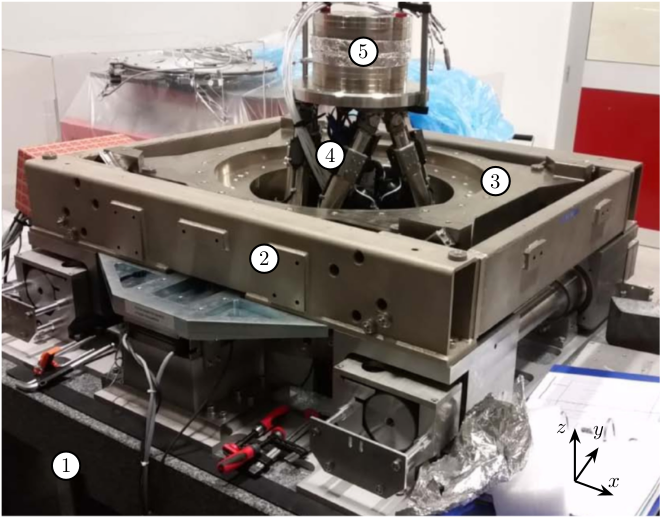2.4 KiB
2.4 KiB
Modal Analysis of the ID31 Micro-Station
The goal is to experimentally extract a Spatial Model (mass, damping, stiffness) of the structure (shown on figure fig:nass_picture) in order to tune the Multi-Body model.

The procedure is represented on figure fig:vibration_analysis_procedure where we go from left to right.

The steps are:
- we obtain a Response Model (Frequency Response Functions) from measurements (described here)
- the response model is further converted into a Modal Model (Natural Frequencies and Mode Shapes) (described here)
- this is converted into a Spatial Model with the Mass/Damping/Stiffness matrices (described here)
Theses matrices will be used to tune the Simscape (multi-body) model.
The modes we want to identify are those in the frequency range between 0Hz and 150Hz.
The modal analysis of the ID31 Micro-station thus consists of several parts: